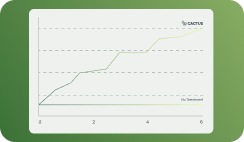Understanding TRT Therapy Risks and Management in Australia
If you’re considering Testosterone Replacement Therapy (TRT) in Australia, it’s essential to know not only the benefits but also the potential risks involved. Whether you’re dealing with symptoms of low testosterone, such as low energy, mood swings, or reduced muscle mass, TRT can be a game-changer. However, TRT isn’t without its side effects. Understanding these risks and how to manage them will help you make the most informed decision.
What is Testosterone Replacement Therapy?
TRT is a treatment designed to increase testosterone levels in men with low-T (low testosterone) due to conditions like hypogonadism. While this therapy can offer tremendous benefits, it’s crucial to weigh these benefits against possible side effects.
What Are The Risks of TRT?
1. TRT Can Impact Fertility in Men
One of the biggest concerns for Australian men considering TRT is its impact on fertility. Testosterone production is closely tied to the pituitary gland, which releases Follicle Stimulating Hormone (FSH) and Luteinising Hormone (LH), key players in sperm production. Research shows that 65% of men on TRT stop producing sperm within 4-6 months. For those who use anabolic steroids in higher doses, this risk of infertility is even more pronounced.
There are medications and protocols that can help maintain sperm production while on TRT, but the efficacy can vary on a patient-by-patient basis. In Australia, if you’re planning to start a family, it’s important to discuss sperm preservation options with a qualified practitioner before beginning TRT.
2. TRT Can Reduce Natural Testosterone Production
One lesser-known but important side effect of TRT is that it can reduce your body’s natural testosterone production. By introducing external testosterone, TRT reduces the body’s production of its own hormones, such as FSH and LH, through a feedback loop. While this effect is usually reversible, it may take several months for the body to restore normal hormone production after stopping TRT.
For Australian men considering TRT, it’s essential to be aware that this can cause dependency on external testosterone to maintain normal levels.
3. Higher Oestrogen Levels
Did you know that TRT can lead to higher oestrogen levels? Testosterone can be converted into oestrogen by the body, which can lead to uncomfortable side effects such as nipple tenderness, water retention, and joint pain. While most men can manage this through proper dosage adjustments, about 10% may need medications to control oestrogen levels.
If you’re overweight or consume alcohol regularly, you may be at a higher risk for elevated oestrogen levels, so it’s worth discussing this with your healthcare provider before starting TRT in Australia.
4. Prostate Cancer Considerations
For men in Australia, one common concern is whether TRT increases the risk of prostate cancer. While studies indicate that TRT doesn’t increase the risk of developing new prostate cancer, it can accelerate the growth of existing prostate cancer. Regular prostate screening is crucial for men undergoing TRT.
5. Polycythaemia (Thickening of the Blood)
Another risk of TRT is polycythaemia, which refers to the thickening of the blood due to increased red blood cell production. Studies have shown this can elevate the risk of blood clots, high blood pressure, and stroke, although most men on TRT can manage this with appropriate dosing adjustments and regular monitoring.
For men with sleep apnoea, untreated conditions can also increase the likelihood of polycythaemia, so it’s vital to address sleep apnea before starting TRT.
6. Liver Inflammation
While rare, some men on TRT experience liver inflammation. This happens when excess testosterone strains the liver’s ability to process hormones, such as testosterone and oestrogen. Routine blood tests can monitor liver health, ensuring any issues are addressed before they become severe
7. Acne and Oily Skin
It’s not uncommon for men on TRT to develop acne or oily skin, especially if testosterone levels become too high. This side effect is generally mild and can be managed with skincare routines or by adjusting your TRT dosage.
8. Hair Loss and Balding
For men genetically predisposed to male pattern baldness, TRT can accelerate hair loss. This happens because testosterone is converted into DHT (Dihydrotestosterone), which is linked to hair loss on the scalp.
TRT Risks in Australia: Conclusion
For men in Australia considering Testosterone Replacement Therapy, it’s important to work with a trusted healthcare provider to manage the risks. Regular blood tests, dosage adjustments, and open communication with your doctor are essential to safely navigating TRT, and can drastically reduce the risks & ensure effective management.
At CactusMen, we partner with experienced GPs who provide thorough medical oversight throughout your TRT journey to minimise and manage risks. Our services are designed to enable ongoing communications between you and your clinical team (GPs and nurses). Our GP partners prioritise your health, offering clear communication and personalised care to help you navigate TRT safely and to support should any challenges arise. If you’re ready to explore your options, we make it easy to begin with comprehensive hormone tests and expert guidance every step of the way.
While TRT offers many benefits for men with low testosterone, it’s important to understand that this is a general guide to the potential risks. Every individual’s situation is different, and the information provided here should not replace professional medical advice. From fertility concerns to the management of high oestrogen levels, it’s crucial to consult with your GP or a healthcare provider to discuss your specific circumstances and ensure you’re making well-informed decisions tailored to your health needs.

